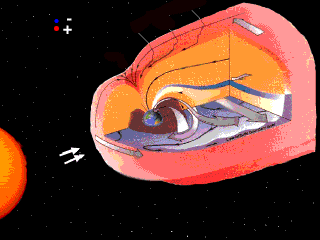This animation shows how particles from the Sun are diverted by the Earth's magnetic field.
Movie provided courtesy of Professor Patricia Reiff, Rice University Connections Program
How Does the Earth's Magnetic Field Protect Us From Space Radiation?
Dangerous particles don't hit the Earth's surface because they are forced by the magnetic field to move around the Earth. Particles do enter at the funnels over the poles or they gain entry far downstream from the Earth. The particles that enter downstream or at the magnetotail cause the auroral lights.
Other higher energy particle radiation that could endanger life on Earth is forced to drift around the Earth within two large donut-shaped regions called the radiation belts. Invisible magnetic fields are the reason that particle radiation moves in this way. Click here for basic facts about particle motions in the Earth's magnetic field.
You might also be interested in:
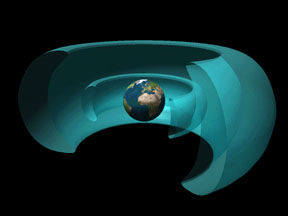
The Earth's radiation belts are just one part of the system called the magnetosphere. The radiation belts of the Earth are made up of electrons, protons and heavier atomic ions. These particles get trapped
...more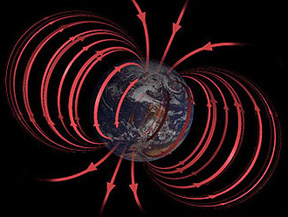
Magnetic fields can cause particles to move in these three ways: Spiral Motion Bounce Motion Drift Motion
...more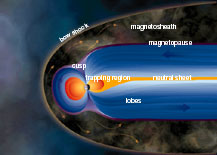
The Earth has a magnetic field with north and south poles. The Earth's magnetic field reaches 36,000 miles into space. The magnetic field of the Earth is surrounded in a region called the magnetosphere.
...more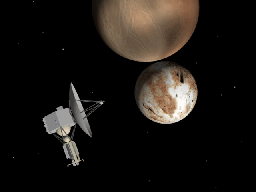
AU stands for Astronomical Units. It is a useful way to measure the distances in interplanetary space. It is the distance between the Earth and the Sun, which is about 93 million miles. For reference,
...more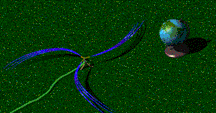
The solar wind is formed as the Sun's top layer blows off into space, carrying magnetic fields still attached to the Sun. Gusts form in the solar wind associated with violent events on the Sun. Particles
...more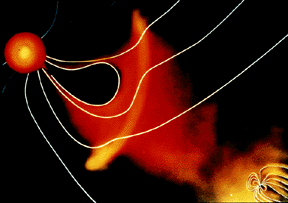
For a planet to be affected by a blob of material being ejected by the sun, the planet must be in the path of the blob, as shown in this picture. The Earth and its magnetosphere are shown in the bottom
...more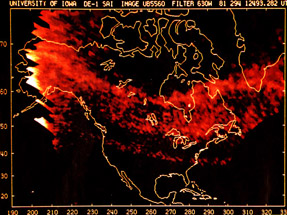
The aurora we are most familiar with is the polar aurora. This is what people are talking about when they say the northern or southern lights. But there are other less-known aurora, such as SAR arcs.
...more
